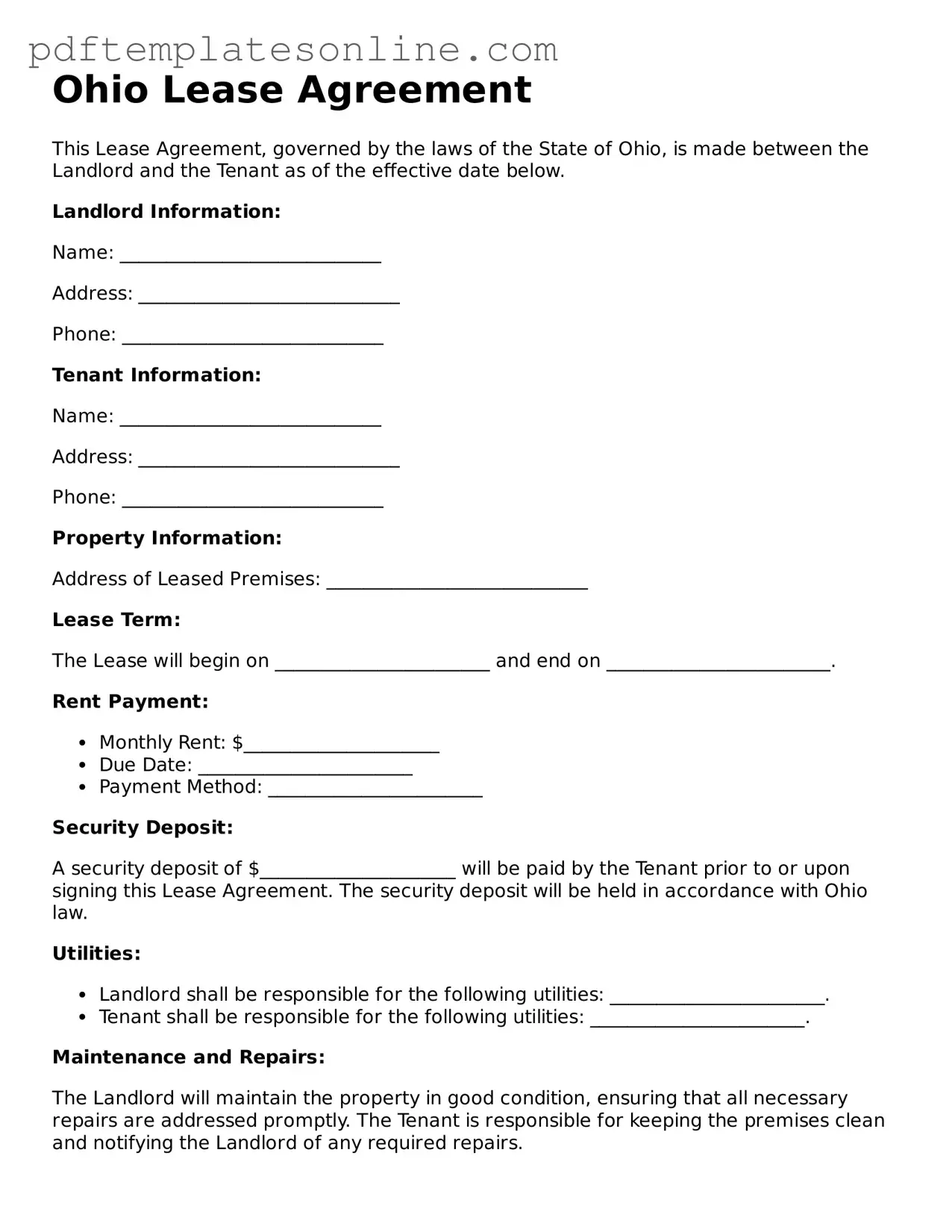Filling out the Ohio Lease Agreement form is a crucial step in securing a rental property. However, many individuals make common mistakes that can lead to misunderstandings or legal issues later on. One of the first mistakes is not providing accurate personal information. It’s essential to include your full name, current address, and contact details. Inaccurate information can create confusion and complicate communication between the landlord and tenant.
Another frequent error is overlooking the lease term. The lease term specifies the duration of the rental agreement, whether it's month-to-month or a fixed term. Failing to clarify this can lead to disputes regarding when the lease begins and ends. Both parties should have a clear understanding of the timeline to avoid potential conflicts.
Many people also neglect to read the entire lease before signing. This can result in missing critical clauses or obligations. For instance, there may be specific rules about pets, maintenance responsibilities, or late fees. By not reviewing the document thoroughly, tenants might unknowingly agree to terms that are unfavorable or unexpected.
Another common mistake involves the security deposit. Tenants often fail to note the amount of the deposit or the conditions under which it will be returned. It's vital to understand the financial implications, as this can affect your budget and expectations when moving out. A clear understanding of the security deposit terms can help prevent disputes at the end of the lease.
Additionally, some individuals forget to document the condition of the property before moving in. Taking photographs or writing down existing damages can serve as important evidence if disputes arise later. Without this documentation, it may be challenging to prove that certain issues were pre-existing, which can affect the return of the security deposit.
Another mistake is not including the names of all occupants. The lease should specify who will be living in the rental unit. This is important for both legal and practical reasons. If unauthorized individuals reside in the property, it could lead to eviction proceedings or other complications.
Lastly, failing to understand the local laws and regulations can be a significant oversight. Each state has its own rental laws, and Ohio is no exception. Being unaware of tenant rights and responsibilities can leave individuals vulnerable. It’s beneficial to familiarize yourself with these laws to ensure that both parties adhere to their obligations and protect their interests.
